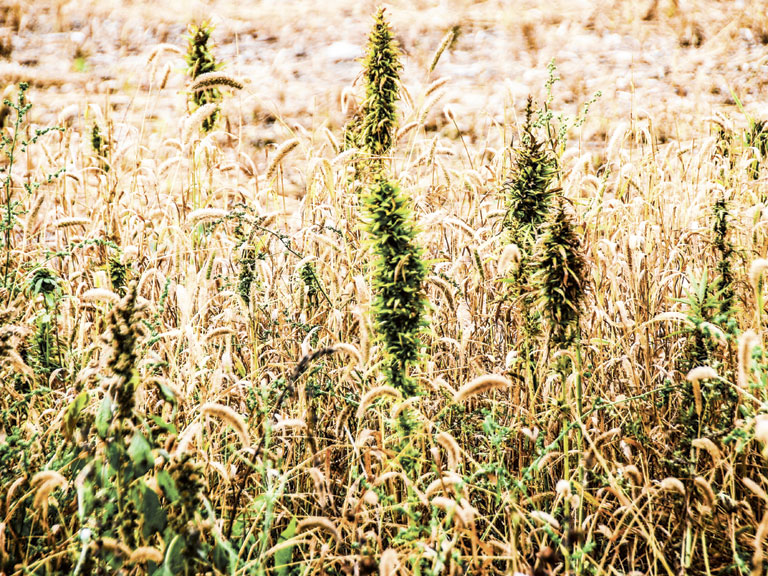County News
Not pot

Wellington’s industrial hemp farmer
A drive up Belleville Road from Wellington this summer led folks past PEC Farms and a curious sight—acres of hemp fields lining the road between County Road 1 and Gilead Road.
The plants are easily recognizable, and with news of potentially legalizing marijuana in Canada, they definitely got people talking.
PEC Farms owner Bob Hunter says although hemp and marijuana are simply different varieties of the same plant—known as cannabis sativa—the industrial hemp crops he has been growing are selected for their lack of THC (tetrahydrocannabinol), the active chemical ingredient in pot.
“We can’t grow it without permission from the federal government and the RCMP,” says Hunter. “You can smoke the whole field and you wouldn’t get high.”
He suspects those who grow marijuana have been selecting plants with the exact opposite intention in mind.
Hemp is a popular crop in Manitoba, with an industry only beginning to take root in Quebec and Ontario. Hunter says currently there are only about 1,000 acres of hemp crops being grown across the province. PEC Farms was the only farm to grow the crop in the County, with seeds purchased from a seed grower in the Ottawa Valley.
Permission to grow hemp is meted out by Health Canada. It has only been allowed since 1998, when a provision was created under the controlled drugs and substances act to allow industrial use of the plant for food and fibre, so long as it contained less than 0.3 per cent THC.
And there are many uses for the plant.
Hemp hearts, the hulled seeds of the plant, are considered a superfood, popularly found on health food store shelves and as an ingredient in smoothies. The seeds have also been used as a flour, an oil and a dairy substitute drink.
The seeds are not the only reason to grow and harvest hemp. For thousands of years, the strong fibres of the hemp stalk have provided human civilizations with a source of material for making rope and cloth, a practice that continues to this day.
But with modern technology, the possibilities of usage for hemp stalk fibres has grown exponentially. Today, the fibres are ground into a pulp that can be used to make plastic, to replace wood fibre and as a source of fuel.
Hunter says the demand for hemp fibre pulp has yet to reach fever pitch, but he has taken a gamble on the plant, adding it to the farm’s regular crops of soy and corn.
“Corn and soybeans are so low price that sometimes you’ve got to try and find alternative crops,” says Hunter. He says the farm experiments with new crops to keep the business viable. “When the prices are as low as they are on corn and soybean commodities, it kind of forces you to look for ways to break even.”
It was worth it. Hunter says that although the hemp suffered from the drought, the yield was about 50 per cent, compared to about 25 per cent for corn.
And it seems to him like the crop of the future. With legislation and environmental accords protecting trees and limiting the production of plastics, hemp will come in handy as an eco-friendly alternative. It’s perfect for a man whose grandchildren work on his farm.
“I try to make a better world for my grandkids,” says Hunter. “I got a couple of pretty good ones.”

Comments (0)